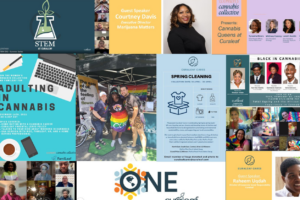Four steps (and one case study) showcasing how organizations can make mental-health efforts more equitable
Managing the intersection of DE&I and mental health is challenging. Thomson Reuters illustrates one approach.

While organizations are trying to address the intersection of DE&I and mental health, minority employees are still struggling, research consistently indicates.
Employees of color, for example, are one-and-a-half times more likely than their white counterparts to worry about career advancement and balancing household duties. Female employees are more likely than male employees to worry about mental health and balancing household obligations. LGBTQ+ employees worry about serious challenges with fair performance reviews, workload increases, and feeling like they belong.
Last year’s racial and mental health crises were a big wake-up call for many organizations, but the data shows that the challenges persist.
One frontline observer is Charmain Jackman, founder and CEO of InnoPsych, a national directory of therapists of color which advocates for more inclusive mental health access. Jackson says she received numerous calls last year from corporate EAPs as organizations scrambled to find therapists for their employees of color. “When we think of inclusive wellness, then we have to think of the people who haven’t historically engaged with those services,” Jackman says.

Statistically, women are more likely to seek counseling than men, and employees of color don’t often engage in mental health services even when they’re available, Jackman says. There are several reasons for hesitancy, she adds, but one is that EAPs rarely offer a diverse list of therapists from which to choose. Also, a lack of measuring which demographics are using the mental health services to begin with allows for a blind spot in wellness engagement. “If you don’t have that data, it’s going to be really hard to track if it’s actually inclusive,” Jackman says.
Jackman offers several recommendations for wellness directors looking to ensure inclusivity and engagement in their programs.
1. Check your accessibility
Lack of accessibility is a common theme. Jackman says she hears from employees that few providers live in the same communities as do employees. Those who commute to work, or don’t speak the same language as a provider, or don’t have access to mobile apps are potentially left behind.
Subsidies or contracts that allow employees to use the resources they choose, whether it’s a local counselor or the yoga studio around the corner can increase engagement from marginalized employees. Virtual offerings play a role here, too.
Resource mapping can help ensure benefits are inclusive to all employees and that employees will engage with them. An increase in participation often follows when wellness programs offer flexibility and variety.
2. Prioritize mental health
As organizations prioritize the programs they want employees to engage with, mental health should be near the top of the list, Jackman says. If employees are getting a day off to get vaccinated, why not an hour a month to access therapy? This benefit would help build mental health into the company culture and show support for those who may feel stigmatized seeking care.
Modeling self-care from the top-down helps employees take care of themselves, too. Jackman shared an example of a manager who sent weekend emails, and though she didn’t expect employees to respond on the weekend, some felt compelled to do it. In this instance, Jackman recommends scheduling emails to model a healthy work-life balance.
In another example, one organization’s leadership mandated Zoom meeting breaks, but lower management was still scheduling meetings that didn’t allow the breaks. Ensuring everyone is on board with a well-being culture is necessary to see the returns on employee mental health.
3. Recognize collective trauma
Speaking up and out on controversial issues is another way organizations can normalize a healthy emotional workplace for marginalized employees. When an event takes place that affects minority communities, ignoring the impact only exacerbates the isolation employees feel. Jackman recommends employers recognize incidents, name what happened and give employees space to lament. “Leaders have to do better at recognizing the impact of collective trauma on employees,” she says.
4. Strategize employee feedback
Strategizing how organizations receive employee feedback and act on it will streamline the process of improving program returns.
For instance, using affinity groups to gather deeper demographic data has been shown to help organizations meet the needs of employees. Jackman has found ongoing programs, like healing spaces or small-group discussions that meet regularly impact employee well-being.
Even when attendance is low, the understanding that these events are part of company culture and not a performative gesture helps marginalized employees feel cared for by their employers. It also adds a layer of trust from employees that can result in another feedback mechanism.
One element of planning Jackman suggests is being prepared for traumatic events with a “phone tree” of leaders who will check on employees. She says not everyone wants to hear from a manager or a work acquaintance when they’re hurting, but if employees designate ahead of time if they wish to be contacted and by whom, it can strategize tapping into employee mindset during sensitive times.
Thomson Reuters leads by example
A 2020 Deloitte study found organizations that are proactive on mental health, including raising awareness and culture shifts to support mental well-being, see a 6-to-1 return on investment.
Thomson Reuters, the global media conglomerate headquartered in Toronto, with 24,000 employees, has a proactive approach to creating an inclusive workspace and fostering well-being and mental health.
“In a diverse, equitable and inclusive work culture, there is no ‘one size fits all’ approach to mental health and wellness,” says Chief People Officer Mary Alice Vuicic. “Better understanding the unique needs of our diverse talent communities is vital to ensuring we can provide a tailored approach as needed.”

The organization starts by creating a safe space to have conversations about topics such as identity, well-being, or disabilities. It proactively provides resources, tools and benefits to support employees with the understanding that “it’s okay to not be okay.”
Some examples of Thomson Reuters efforts include:
- After George Floyd’s murder last year, Thomson Reuters employees needed support processing the event, which happened in Minneapolis, near the company’s largest global office. It created opportunities for candid conversations about race and social justice, provided counseling, and connected its Black employees to create a sense of community. Engagement was high, with 1,000 participants at some sessions.
- This year, Thomson Reuters’ Asian Affinity Network hosted an all-employee event to increase solidarity when anti-Asian violence rose.
- The company added transgender benefits and revised transition guidelines to ensure a supportive environment for employees transitioning in the workplace. Its LGBTQ+ leaders hosted roundtable discussions on the intersection of identity and work, including mental health.
- For International Women’s Day in March, a women’s business resource group at Thomson Reuters hosted panel discussions to increase the visibility of COVID-19’s impact on women. Afterward, it offered small-group discussions for peers to continue sharing experiences. Thousands of employees attended across both the large-scale and local events.
Vuicic says there’s a natural link that exists between wellness and DE&I. From an employee perspective, identity and overall well-being are linked, so addressing them together makes sense. “Tailoring programming, benefits, resources, and more that takes this into account and holistically supports the whole of a person is vital in truly addressing the needs of our employees,” says Vuicic.
COMMENT
Ragan.com Daily Headlines
Tags: DE&I, engagement, mental health, Thomson Reuters






